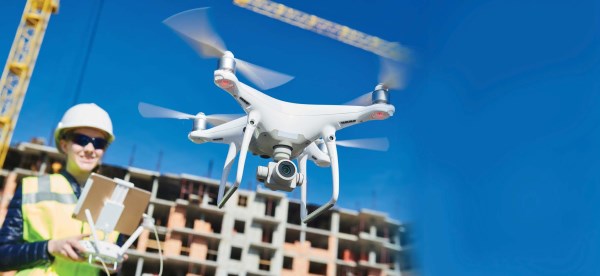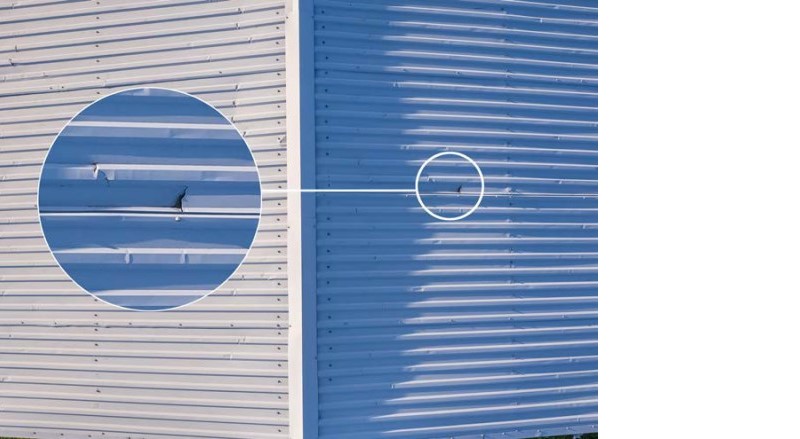How AI and Drone Technology Is Transforming the Strata Industry

The strata industry is changing. Strata owners are demanding quick, excellent service and Insurers and Underwriters are asking for more detailed and higher-quality building information. These factors coupled with the ongoing issues around building maintenance and defect management has forced many industry providers to revolutionise their service offering.
To tackle these growing demands around building maintenance and defects, and to the amplify the service provided to Strata Owners, building inspection providers are adopting cutting-edge technologies like artificial intelligence (AI) and drones to give greater insight, detail, and efficiencies through virtual inspections.
Traditional building inspections can be time-consuming, costly and dangerous. Virtual inspections utilising done technology captures up-close, detailed images of damages and debris, as well as mapping out the building. Automated damage detection uses AI and deep learning tools to analyse inspection imagery to identify hail damage, broken roof tiles, leaking pipes and much more.
Virtual building inspections also offer a more environmentally friendly solution by reducing the speed of the inspection, and providing more in depth and precise data that can be utilised by numerous other service providers. This in turn reduces the amount of energy and fuel expelled from multiple site visits by various contractors.
How do Virtual Inspections work?
Utilising modern state-of-the-art 3D lidar technology, combined with AI-powered drone, a Virtual Inspection can map out the internal and external measurements of a building with precision and intricate detail. It provides a 3D model of the risk (externally and of the roof) as well as an accurate real life 360-degree virtual inspection / tour of the inside of a building. The data can then be reviewed by multiple experts to report on damage or make decisions on maintenance and repair of buildings.
This innovation enables a range of benefits to the building inspection process:
- PREVENTION – Create a blueprint from which to assess and identify defects, damage and faults to prevent costly claims.
- ACCURACY – Precise and exportable measurements, inspection grade 3D modelling and 360-degree internal inspections and floor plans.
- SUSTAINABILITY – Reduce carbon footprint saving on energy and fuel from multiple and lengthy site visits.
- EFFICIENCY – Replace high cost and timely inspections with a virtual inspection in a fraction of the time. Measure once and utilise the data for a range of reports.
- SAFETY – A safe and accessible inspection option, especially post catastrophe inspections, for roof inspections or dangerous sites.
What is 3D LiDAR technology?
LiDAR is an acronym for “light detection and ranging.” It is sometimes called “laser scanning” or “3D scanning.” The technology uses laser beams to create a 3D representation of the surveyed building. The laser beam pulse bounces off surrounding objects and returns to the sensor. The sensor uses the time it took for each pulse to return to the sensor to calculate the distance it travelled. Repeating this process millions of times per second creates a real-time 3D map of the building. Using the LiDAR scan the internals of a building are captured in high detail in a fraction of the time with minimal disruption to building occupants.
For over 45 years, CHU Underwriting Agency has consistently led the way in the strata and community title insurance sector within Australia. CHU Services was established in 2018 as part CHU’s future focused strategy. Continually enhancing the service value proposition for customers, leveraging AI and technology, and a digital tool set to provide customers with greater functionality and service delivery options. With innovation and sustainability at the forefront of CHU’s values, CHU Services has recently introduced the exciting new addition of CHU Inspect. Offering virtual inspections of both internal and external buildings and automated reporting utilising the enhancements of AI and Drone technology, offering a more sustainable approach for the industries future.
What excites me the most about CHU Inspect, is the positive environmental impact in addition to saving time and money from multiple stakeholders having to attend the site to gather the same information.

The data generated by the virtual inspection will aid surveyors, engineers, loss adjusters and building maintenance and repair teams to spend less time travelling to and from sites and more time utilising their expertise in making informed decisions. This will prove especially useful post catastrophes when access to sites may be difficult and dangerous.
Chris Frazer, CHU Services General Manager
This virtual inspection process offers an efficient and sustainable way to identify faults that can be picked up early, to prevent costly mistakes or claims. It offers time and cost savings across many stages of the building management lifecycle.
Who can benefit from a Virtual Inspection?
Virtual inspections are valuable for all strata buildings, even before an incident occurs. The initial scan or inspection can be used as a blueprint for future claims, events, or annual maintenance and repairs planning. Regular building and roof inspections can help detect early issues and prevent costly emergency repairs and claims. This can also help to avoid any uncertainty if a claim occurs.
Maintaining a safe and secure building is the number one priority of Strata Owners and Committees. The use of AI and drone technology is set to transform the industry with applications reaching further than just building inspections.
This article was supplied by CHU Underwriting Agencies
Important note
Insurance issued by QBE Insurance (Australia) Limited ABN 78 003 191 035 and distributed by CHU Underwriting Agencies Pty Ltd ABN 18 001 580 070 AFSL 243261. Any advice in this article is general in nature and does not take account of your personal objectives, financial situation and needs. Please read the relevant Product Disclosure Statement (‘PDS’), Financial Services Guide (‘FSG’), and the Target Market Determination (‘TMD’) which can be viewed at chu.com.au or obtained by contacting CHU directly. CHU Services Pty Ltd t/as CHU Inspect (ABN 99 616 086 269).
View Comments
(0)